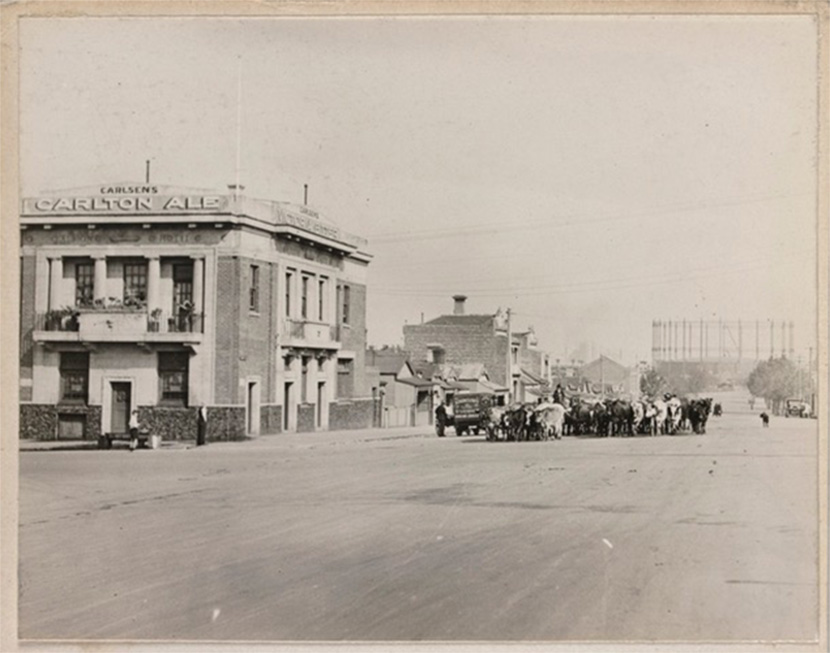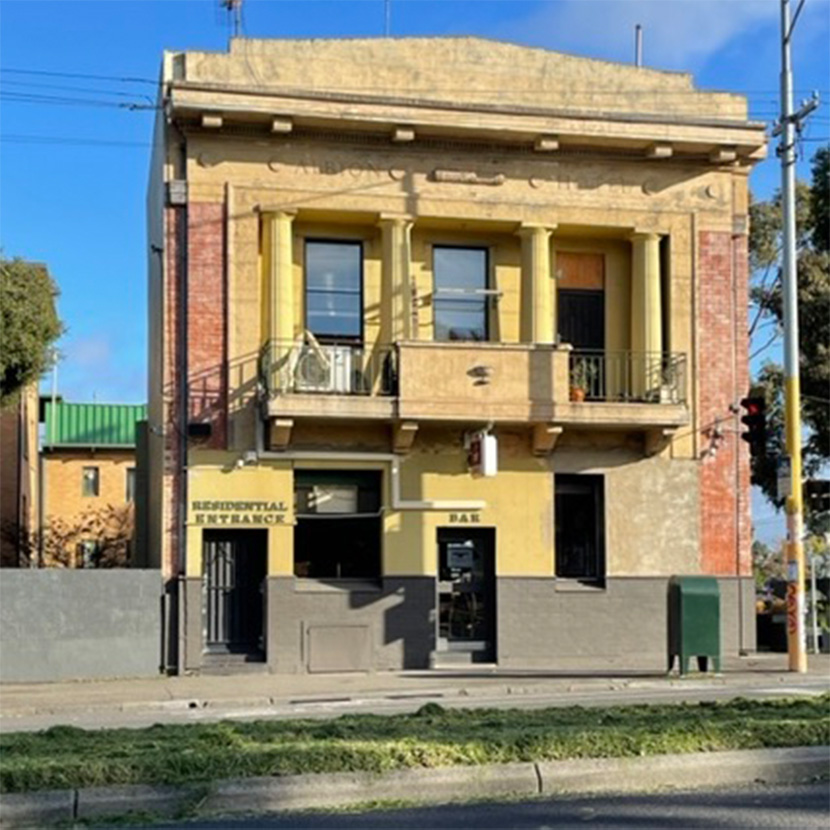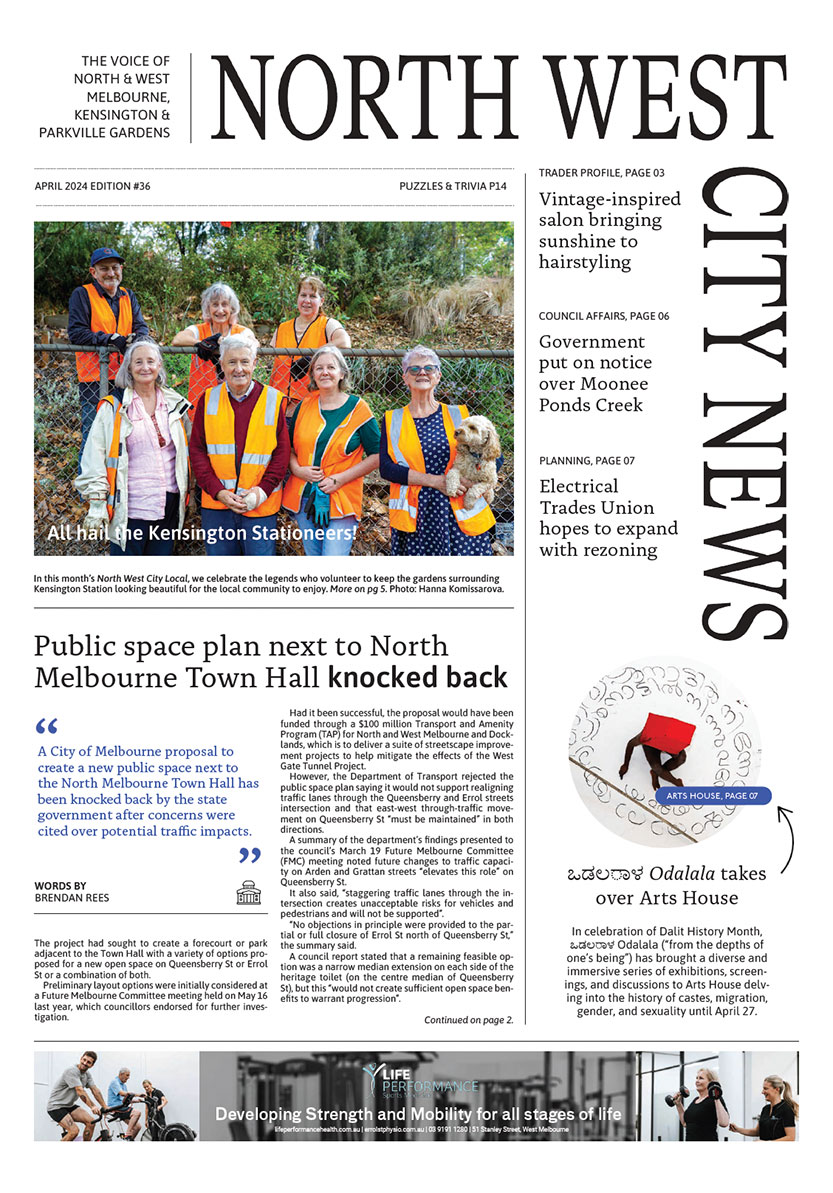The Albion Hotel
The Albion Hotel was rebuilt in 1926, the year that our present Queen Elizabeth was born.
The hotel and the monarchy have endured massive changes during the past 96 years and one thing is certain – more change is on its way for both institutions.
The photo of 1935 shows the Albion Hotel and a view along Haines St with the gasometer that was demolished in 1978 in the distance. Cows are being herded eastward, presumably making their way to the meat market, and what appears to be a wheeled delivery vehicle is at the side of the road.
There are no trees, and no sign of the substantial slum area to the north of Haines St, where houses huddled together in close proximity. These were demolished after The Second World War to make way for the housing commission flats that have in turn recently been demolished to make way for a large-scale housing development. Currently a multi-level school and a gym are under construction.
On February 7, 1874, Hugh Peck, proprietor of the Freehold Home Investment and Building Societies Savings Bank, advertised a huge number of valuable freehold properties in different areas of Melbourne. He was offering more than £50,000 of properties in the
“important and rapidly improving borough” of Hotham. One of these properties was a large block along Haines St from Curzon to Abbotsford streets that included the Nene Valley Hotel that was on offer for £4711.
On July 22, 1874 the Argus advertised the Nene Valley for sale. It was new, on a splendid corner block, but the offer doesn’t seem to have been taken up as the contents of the hotel were auctioned in February 1875.
By 1886 the Nene Valley had been renamed as the Albion Hotel. Both the Albion and Nene Valley have English associations: the River Nene has its source in Northamptonshire while Albion (derived from Greek, meaning white) is believed to have been named by the Romans after the white cliffs of Dover which they would have encountered on their invasion of Britain.
The Albion has remained relatively unchanged since it was rebuilt, the only substantial change being the residential door being built on the left of the Curzon St main entrance. This is probably because Harris St no longer ran west of Curzon St where the hotel’s residential entrance had been.
Articles sourced from Trove trace some incidents from the hotel’s history in its early days.
On August 28, 1895 the proprietor Ann O’Shannassy was convicted of selling inferior spirits and was fined 2/6d with costs. A further seven local hotels received similar convictions.
The Liquor Licensing Board had strict control over the operation of public houses, and it is likely that the police took advantage of this to secure convictions, even on New Years’ Day. On January 1, 1902, the licensee, Elizabeth Martin, was fined £5 for having the hotel door open at 2am.
Many hotels paid scant attention to the six o’clock closing rule that came into effect in Victoria in 1916 and did not end until 1966. The following event took place in 1933 …
Licensee shut himself outside
Evidence was given by Constable McKean at North Melbourne Court that when he and other police arrived outside the Albion Hotel in Curzon St, at 8.20 pm on August 24, Peter Anten Carlsen, the licensee, who was in the doorway, stepped on to the footpath, closed the door and then knocked on it, saying, “Police here.”
McKean said he and the other police were admitted to the hotel five minutes later by Carlsen’s wife. Wet glasses were found in the bar room, a door of which was open.
For having the bar room door open during prohibited hours, Carlsen was fined £5. On a second charge of having disposed of liquor during prohibited hours he was fined £2.
The following article appears in the South Australian Advertiser for July 7, 1914, demonstrating how news was syndicated throughout the country. The same article does not seem to have appeared in local papers.
Incendiarism. Hotel door set alight
Melbourne, July 6, 1914. Early on Saturday morning a door of the Albion Hotel, Curzon St, North Melbourne, was discovered on fire …
Mr. H. F. O’Brien, the licensee, was in his room at the time, and was disturbed by smoke. With his wife he searched for the cause, and on going downstairs found the door leading to Harris St alight. A quantity of burnt paper was on the stone step. Previous to going downstairs Mr. O’Brien heard someone knocking at the door, and on looking through a window saw a man gazing upward, but when the door was opened this man had disappeared.
No mention is recorded of the firelighter having been identified.
Today the hotel is well patronised and gets excellent reviews for its food and its friendliness.
The Albion Hotel is currently being considered for inclusion for heritage protection by the City of Melbourne. The proprietor, Jodie Yaman, does not know the implications for the hotel, but is clearly apprehensive that it will involve more restrictions and red tape. Spiraling inflation and the ongoing effects of the pandemic mean ongoing uncertainty for this historic hotel.
But one thing is clear: Jodie will do everything she can to maintain the high standard of service for as long as she can. •
For more information: hothamhistory.org.au
Caption 1: Albion Hotel. Photo from the State Library of Victoria.
Caption 2: Albion Hotel.

Jo Ryan unveils Ordered Chaos at Blender Studios







 Download the Latest Edition
Download the Latest Edition